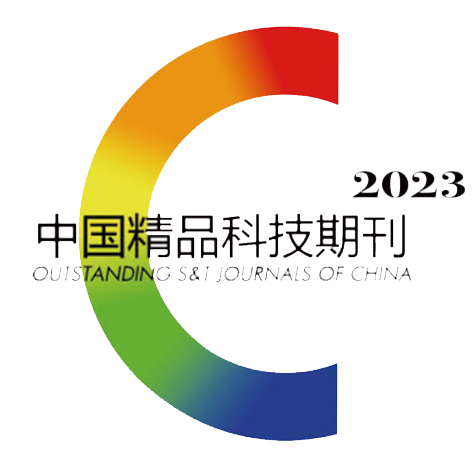| [1] |
中国科学院中国植物志编辑委员会. 中国植物志: 第29卷[M]. 北京: 科学出版社, 2001: 9.
|
| [2] |
李朝阁. 八月瓜酒酿造及籽油、多酚提取和抗氧化性研究[D]. 西安: 陕西科技大学, 2016.
|
| [3] |
周娜娜. 三叶木通籽油提取及生物活性研究[D]. 长沙: 中南林业科技大学, 2018.
|
| [4] |
殷春燕, 杨明建, 张献忠, 等. 溶剂法提取黄刺玫籽油的工艺研究[J]. 现代食品,2020(11):95−99.
|
| [5] |
丛凯平, 李婷婷, 吴彩娥, 等. 不同方法提取油茶籽油品质比较及电子鼻分析[J]. 精细化工,2020(2):339−345.
|
| [6] |
Liu C, Hao L H, Chen F S, et al. Study on extraction of peanut protein and oil bodies by aqueous enzymatic extraction and characterization of protein[J]. Journal of Chemistry,2020:1−11.
|
| [7] |
Dhanashree C P, Akash G, Virendra K R. Comparative study of ultrasonic pretreatment and ultrasound assisted three phase partitioning for extraction of custard apple seed oil[J]. Ultrasonics Sonochemistry,2020:61.
|
| [8] |
Thainara B M, Natalia S, Lucio C F, et al. Pumpkin (Cucurbita maxima) by- products: Obtaining seed oil enriched with active compounds from the peel by ultrasonic- assisted extraction[J]. Journal of Food Process Engineering,2019,42(5):e13125.
|
| [9] |
杨建远, 陈芳, 宋沥文, 等. 油茶籽油提取技术研究进展[J]. 食品与机械,2016,32(2):183−187.
|
| [10] |
Zhang W M, Pan Y G, Huang W Y, et al. Optimized ultrasonic- assisted extraction of papaya seed oil from Hainan/Eksotika variety[J]. Food Science & Nutrition,2019,7(8):2692−2701.
|
| [11] |
李杏元, 张旺喜. 微波辅助超临界CO2萃取三叶木通籽油的工艺研究[J]. 中国油脂,2018,43(12):13−17.
|
| [12] |
Priyanka, Khanam S. Supercritical CO 2 extraction of carrot seed oil: screening, optimization and economic analysis[J]. International Journal of Environmental Science and Technology,2020,17(4):2311−2324. doi: 10.1007/s13762-019-02497-y
|
| [13] |
宋媛媛. 乙醇辅助水酶法提取牡丹籽油工艺研究[D]. 无锡: 江南大学, 2018.
|
| [14] |
李杨, 江连洲, 杨柳. 水酶法制取植物油的国内外发展动态[J]. 食品工业科技,2009,30(6):383−387.
|
| [15] |
冷玉娴. 水酶法提取葵花籽油和葵花籽蛋白的回收[D]. 无锡: 江南大学, 2007.
|
| [16] |
张卫国, 卢春花. 三相分配法从茶籽中提取油脂的研究[J]. 食品工业,2011,32(3):81−83.
|
| [17] |
张娟, 代鑫鹏, 周研, 等. 水酶法提取牡丹籽油的工艺条件优化[J]. 食品研究与开发,2018,39(18):51−56.
|
| [18] |
王慧娟, 吴正奇, 黄梦萍, 等. 乙醇预处理水酶法提取牡丹籽油的工艺优化[J]. 食品研究与开发,2020,41(12):135−139.
|
| [19] |
黄鑫, 张利军, 张保艳. 油茶籽油提取方法对比分析[J]. 中国油脂,2019,44(6):9−13.
|
| [20] |
Peng L, Ye Q, Liu X Y, et al. Optimization of aqueous enzymatic method for Camellia sinensis oil extraction and reuse of enzymes in the process[J]. Journal of Bioscience and Bioengineering,2019,128(6):716−722. doi: 10.1016/j.jbiosc.2019.05.010
|
| [21] |
Panadare D C, Rathod V K. Three phase partitioning for extraction of oil: A review[J]. Trends in Food Science & Technology,2017,68:145−151.
|
| [22] |
Zhang L, Zhou C S, Wang B, et al. Study of ultrasonic cavitation during extraction of the peanut oil at varying frequencies[J]. Ultrasonics Sonochemistry,2017,37:106−113. doi: 10.1016/j.ultsonch.2016.12.034
|
| [23] |
王小媛, 马宝晨, 纵伟. 不同提取方法对杜仲籽油质量的影响[J]. 食品工业科技,2019,40(23):119−124.
|
| [24] |
王呈馨, 张忠, 范柳萍, 等. 翅果油超临界CO2流体萃取工艺优化及其不同提取方法的比较[J]. 中国油脂,2019,44(7):12−15.
|
| [25] |
高妮娜, 刘鸿铖, 邹岩, 等. 提取方法对奇亚籽油品质特性的影响[J]. 食品工业科技,2020,41(6):284−291.
|
| [26] |
李玉邯, 陈宇飞, 杨柳, 等. 超声辅助超临界二氧化碳萃取紫苏籽油的工艺研究[J]. 粮食与油脂,2016,29(12):45−47.
|











 DownLoad:
DownLoad: